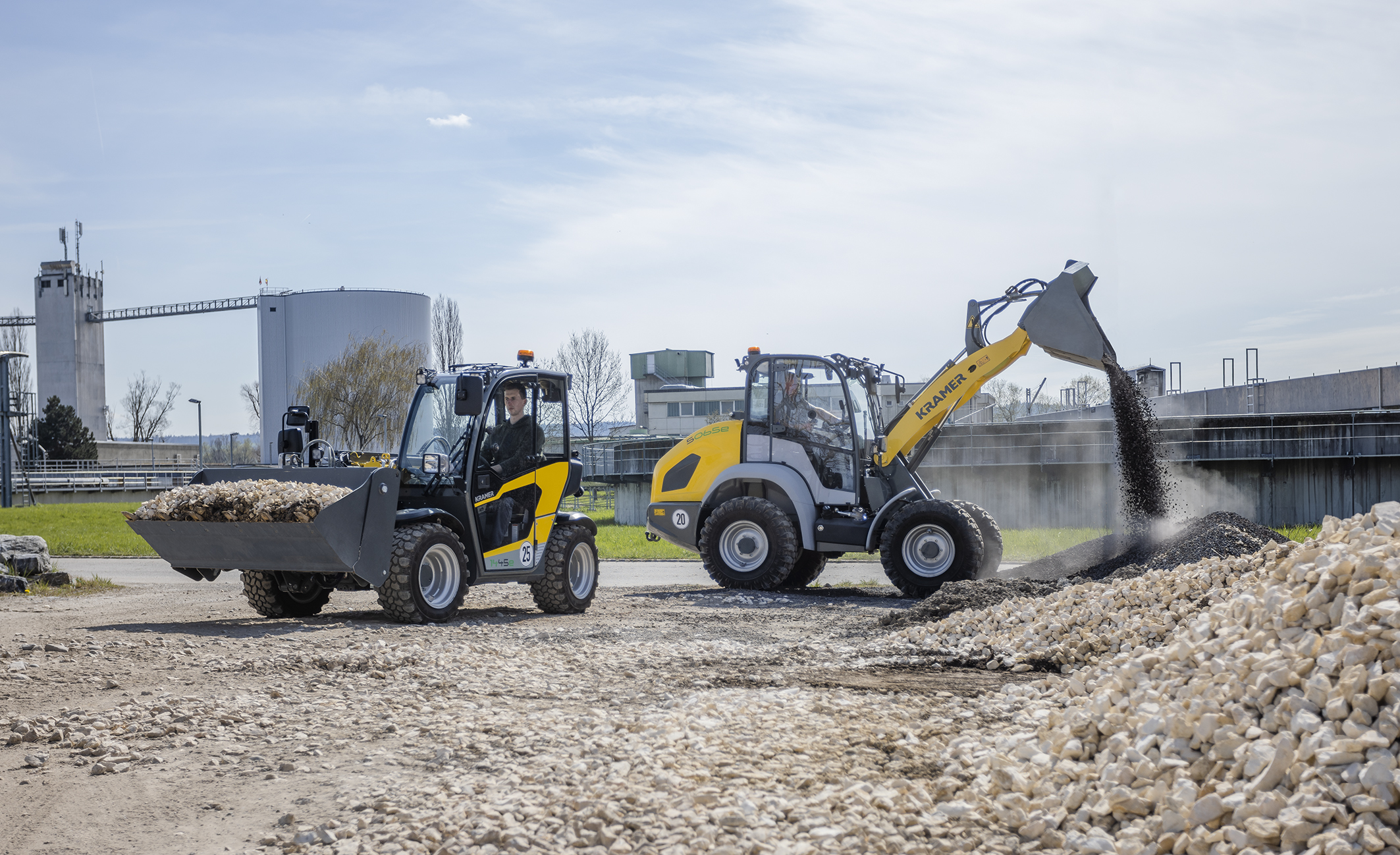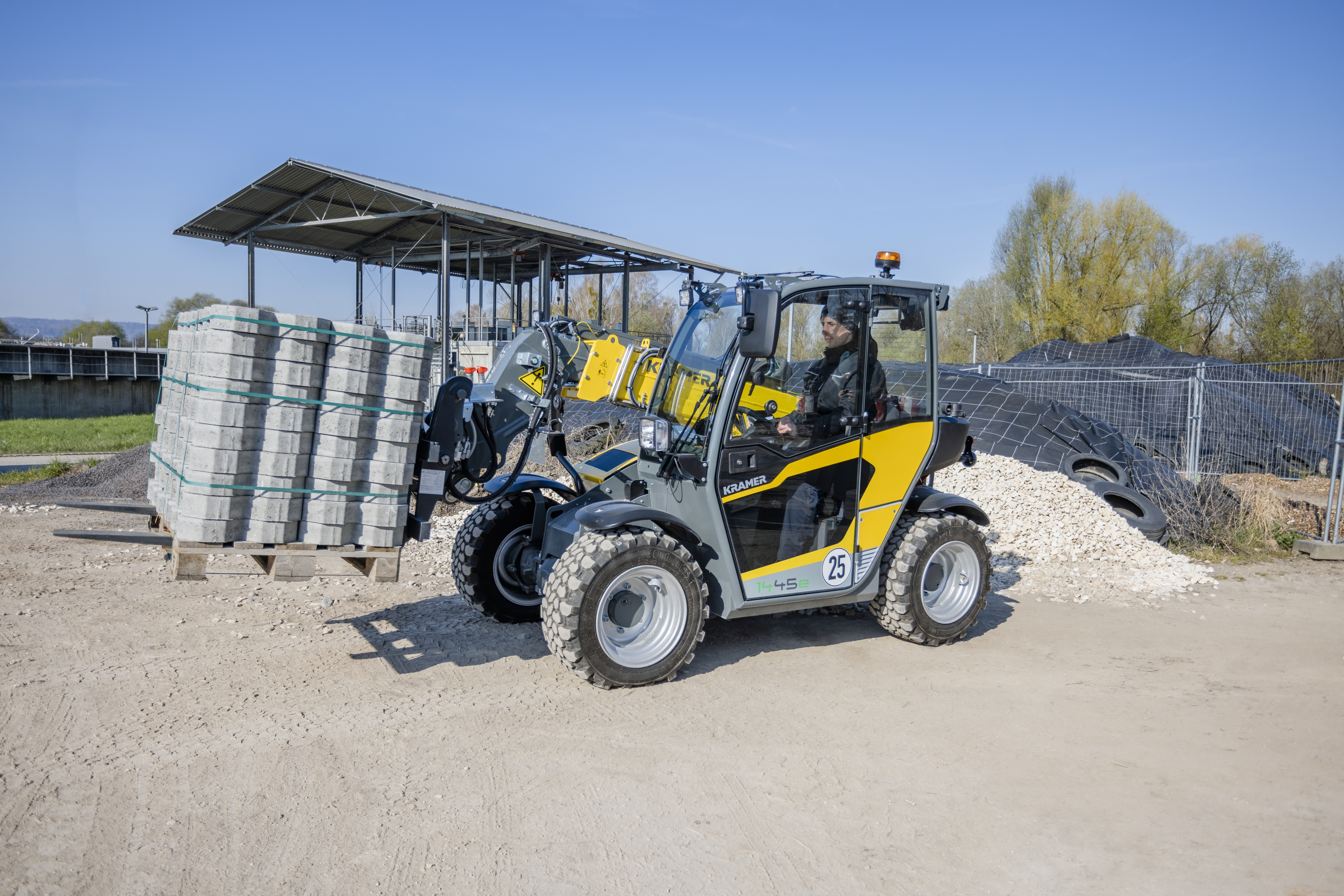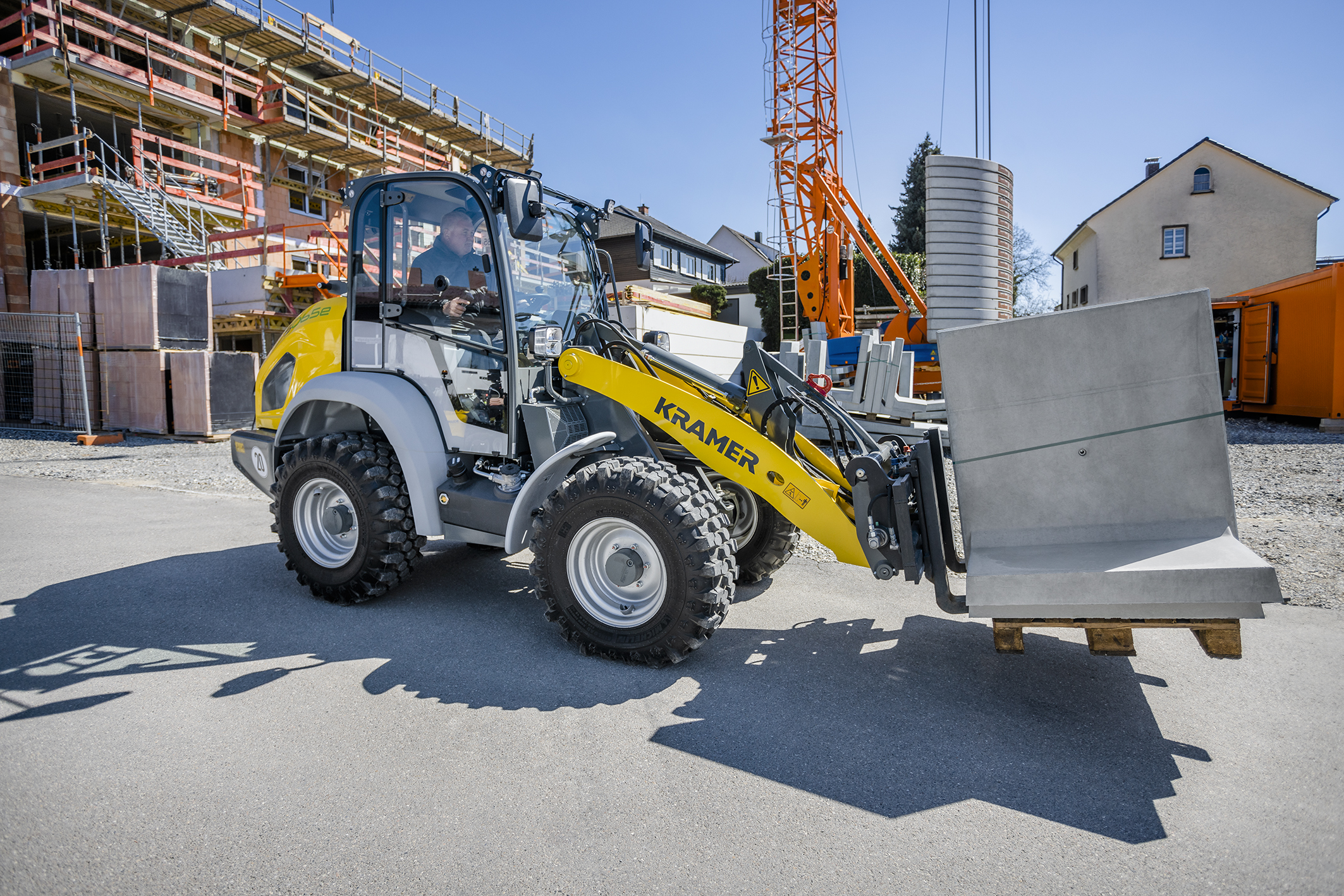Zero emissions – time for clean air.
Electric mobility is playing an ever more important role in the construction sector. Electrical construction machines are best suited to low-noise work, for example in sensitive environments like residential areas, inner cities, park grounds, zoos and on cemeteries, as well as in regions with a high proportion of tourism. The electrical machines work very quietly and are free from CO2 emissions. As a result, it is even possible to work inside or in greenhouses without restrictions.
The new electric wheel loader 5065e
In 2016, Kramer presents the all-wheel e-wheel loaders as the first manufacturer. This year, Kramer is introducing the successor of today’s success-model 5055e: the 5065e. The largest e-wheel loader in the Kramer portfolio is equipped with a 96 Volt lithium-ion battery for a running time of up to 4 hours without any interim charging. From a design point-of-view, the electric wheel loader is impressive with a flattened battery bonnet design for optimal visibility to the rear. Independent of the e-technology, the loader has compact dimensions and as a result provides optimal power ratings in stacking and bucket operation. With a stacking payload of 1,750 kilogrammes and an operating weight of 3,800 kilogrammes, the wheel loader is not inferior to its diesel counterpart.
The new electric telehandler 1445e
The second, zero-emission highlight is an ultra-compact, electric telehandler: the 1445e. The 96 Volt lithium ion technology is likewise installed here. With its dimensions, a height of under 2 metres and a width of approx. 1.60 metres, as well as its operating weight of maximum 3,250 kilogrammes, it has outstanding power ratings. Performance parameters, off-road capability and operating comfort all correspond to the features of a conventional Kramer diesel wheel loader 1445. The overall performance of the vehicle even surpasses that of the diesel model: with the electric motor the drive system’s and loading system’s performance are immediately available. The maximum speed of the e-telehandler is 25 km/h.
An 18 kWh or 28 kWh battery is available for this model.
Innovative battery technology
The battery also has a Battery Management System (BMS). This monitors, for example, the battery’s temperature. Both the efficiency and safety of the battery are increased and a battery deep-discharge is excluded.
The matter of charging has been completely rethought for both machines. As a result, not only the charging performance of the on-board charger was clearly increased; however, a lot of value was above all placed on improved accessibility to the charging plug. It was likewise important to achieve uniformed operation across the products, like the integration of the standardised Type 2 plug, which is familiar across the automotive industry. It there will not matter in the future whether you charge using a standard household socket, an industry socket, a wall box or a public charging point.
The electric running time varies depending on many factors, like the driving style, application type, machine equipment and environmental conditions. It is possible to work with the wheel loader and telehandler for up to 4 hours without interim charging. Through the regeneration - energy recovery - the running time is extended. As soon as the operator takes their foot off the drive pedal, the drive system switches to regeneration. This means that the motion energy of the wheel loader in converted into electric energy and therefore recovered.


![[Translate to English:] [Translate to English:]](/fileadmin/user_upload/titelbild-kramer_1445e_5065e_elektro_neu_klein.jpg)


